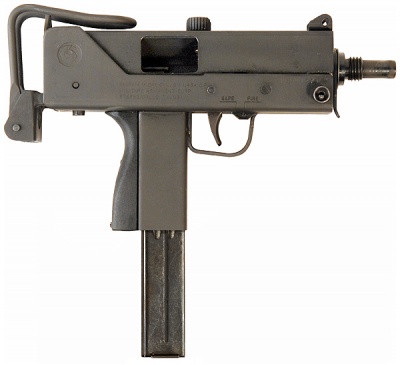- Before digging in, select a primary format you’ll use the most: MacOS Extended if you primarily use Mac with a secondary exFAT partition, or NTFS if you mainly use Windows 10 with a secondary.
- Truly appreciate you watching the videos!!!The Kentucky Patriot here: Merch available - https://b.

Mac OS X Yosemite 10.10 is another product in Apple’s line of Mac OS X. Apple, in its line of amazing Mac OX titles, launched the Mac OS Yosemite 10.10 which took the world by storm. It’s new improved features allow even greater synchronization between iPhones and Macs when using the Internet.
| MAC-11 | |
|---|---|
The MAC-11A1 without a magazine and the stock folded | |
| Type | Machine pistol Submachine gun |
| Place of origin | United States |
| Service history | |
| In service | 1972–present |
| Used by | See Users |
| Production history | |
| Designer | Gordon Ingram[1] |
| Designed | 1972 prototype was in development in 1964 and 1965 |
| Manufacturer | Military Armament Corporation Cobray Company RPB, SWD Inc. Jersey Arms Leinad MasterPiece Arms |
| Produced | 1972–present |
| Variants | MAC-11A1 MAC-11/9 |
| Specifications | |
| Mass | 1.59 kg (3.50 lbs) |
| Length | 248 mm (531 mm stock extended) (9.76 in/20.90 in) |
| Barrel length | 129 mm |
| Cartridge | .380 ACP, 9x19mm Parabellum |
| Action | Straight Blowback |
| Rate of fire | 1200 /min[2] |
| Muzzle velocity | 980 ft/s |
| Effective firing range |
|
| Feed system | 16 or 32-round box magazine[1][4] |
| Sights | Iron sights |
The Ingram MAC-11 (Military Armament Corporation Model 11) is a subcompact machine pistol/submachine gun developed by American gun designer Gordon Ingram at the Military Armament Corporation (MAC) during the 1970s in Powder Springs, Georgia.[5][6] The weapon is a sub-compact version of the Model 10 (MAC-10), and is chambered to fire the smaller .380 ACP round.[6]
This weapon is sometimes confused with the Sylvia & Wayne Daniels M-11/9, its successor the Leinad PM-11, or the Vulcan M-11-9, both of which are later variants of the MAC chambered for 9 mm Luger Parabellum cartridge.[7][8] Cobray also made a .380 ACP variant called the M12.[9]
The Minnesota Bureau of Criminal Apprehension (BCA) considers MAC-11 variants such as the Leinad PM-11 to be part of the 'MAC-10 class pistol.'[10]
Design[edit]
Operation[edit]
Like the larger M-10, the M-11 has open sights with the rear pinhole sight welded to the receiver. These sights are for use with the folding stock, as using them without the stock is nearly useless because of the initial jump of the weapon due to its heavy, open-bolt design. The M-11A1 also has two safety features which are also found on the Model 10A1. The charging handle rotates to 90 degrees to lock the bolt in the forward position thus preventing the weapon from being cocked. The second safety is a slider which is pushed forward to lock the trigger, which in turn pins the bolt to the rear (cocked) position. This prevents the weapon from discharging even when dropped, which is not uncommon with an open-bolt design.
Performance[edit]
The rate of fire of the M-11A1 is one of the biggest complaints on the firearm. Listed as approximately 1,200 rpm (rounds per minute),[8] the MAC-11 is capable of emptying the entire 32-round magazine in less than two seconds, which many users view as a drawback.[11] Rate of fire will also vary depending on the weight of bullets used. The gun also has a selector switch that allows it to fire only one round at a time in the semi-automatic mode.
Noting the weapon's poor accuracy, in the 1970s International Association of Police Chiefs weapons researcher David Steele described the MAC series as 'fit only for combat in a phone booth.'[12]
The M-11 is the least common version in the MAC family of firearms. At the MAC-11's high cyclic rate, extreme trigger discipline is required to discharge short bursts, which are required for combat effectiveness. Without proper training, the natural tendency of the inexperienced shooter is to hold down the trigger, discharging the entire magazine in little more than two seconds, often with poor accuracy due to recoil.
Sound suppressor[edit]
A specific suppressor was developed for the MAC-11, which used wipes as baffles, instead of the reflex baffles that Mitchell Werbell III created for the MAC-10. Though wipes are less durable than reflex baffles, they had the advantage of proving quieter for the MAC-11. The suppressor is 224 mm in length and is covered with Nomex-A heat-resistant material.[1]
Manufacturers[edit]
MAC-type submachine guns and semi-automatic pistols were first manufactured by the Military Armament Corporation, and later by RPB Inc., Sylvia/Wayne Daniel Inc.,[13]Cobray, Jersey Arms, Leinad, MasterPiece Arms,[8] and Vulcan.
Users[edit]
- Israel
- South Korea
- Taiwan: Used by Special Forces
- United States
- Philippines:Used by Special Forces
- Venezuela: Known to be used by the Cuerpo de Investigaciones Científicas Penales y Criminalísticas (Scientific Penal and Criminal Investigations Corps).[14]
- Malaysia:Used by Special Actions Unit, Royal Malaysian Police Specific by the VIP bodyguard personnel team
See also[edit]

References[edit]
- ^ abcHogg, Ian (1989). Jane's Infantry Weapons 1989-90, 15th Edition. Jane's Information Group. p. 117. ISBN0-7106-0889-6.
- ^'MAC-11 RPM'.
- ^'MAC Ingram M10 / M11 (USA)'. Weapon.ge – Modern Firearms Encyclopedia. Retrieved 11 June 2011.
- ^'Operation and Maintenance Manual: Military Armament Corporation'(PDF). Military Armament Corporation. pp. 2, 5, 28.
- ^Frank Iannamico. The Mac Man: Gordon B. Ingram and His Submachine Guns. p. 103. ISBN978-0-9823918-1-5.
- ^ abJack Lewis (2004). Assault Weapons. Krause. p. 76.
- ^Jones, Richard (2009). Jane's Infantry Weapons 2009-2010. Jane's Information Group. p. 139. ISBN0-7106-2869-2.
- ^ abcRobert E. Walker (2012). Cartridges and Firearm Identification. CRC Press. pp. 216, 241, 322. ISBN1466502061.
- ^Jerry Lee (2011). The Gun Digest Book of Guns & Prices 2011. Gun Digest Books. p. 235. ISBN1440235430.
- ^Lou Raguse (14 January 2021). 'New warrants in Idd's case reveal car search and investigation of possible link to brother's case'. MSN News. Kare 11. Archived from the original on 14 January 2021. Retrieved 14 January 2021.
And they found a backpack on the passenger side that had ammunition and 'Leinad PM-11 high capacity pistol.' The BCA calls it 'a MAC-10 class pistol,'
- ^'Ingram MAC Model 10 / M10 and Model 11 / M11 submachine guns (USA)'. Official site.
- ^Jack Lewis (28 February 2011). Assault Weapons. Gun Digest Books. pp. 79–. ISBN1-4402-2400-5.
- ^Iannamico, Ian. 'Manufacturing History of Ingram-MAC Type Firearms'. Small Arms Review. Chipotle Publishing, LLC. 20 (1): 104.
- ^http://armamentresearch.com/early-colt-sp1-self-loading-rifle-in-venezuela/
Sources[edit]

- Randal Stepan, Nolan Wilson, Gary Reisewitz. Mac-10 Cookbook. Arkansas: Desert Publications, 1989.
External links[edit]
| Wikimedia Commons has media related to MAC-11. |

Check display support
You can connect one or more external displays depending on your Mac model. To find out how many external displays your Mac supports, check its technical specifications:
- Choose Apple menu > About This Mac.
- Click the Support tab.
- Click Specifications.
- On the webpage that appears, the number of displays your Mac supports appears under Video Support or Graphics.
If you're using a Mac with Apple silicon, you can connect a single external display to your Mac using one of the Thunderbolt / USB 4 ports. Docks don't increase the number of displays you can connect as an extended desktop. On Mac mini (M1, 2020), you can connect a second display to the HDMI port.
Connect your display
Connect your display to power, then connect your display to your Mac. Check the ports on your Mac to find out whether you need an adapter.
Change display options
After you connect your display, you can choose to extend your desktop or mirror your displays.
Use extended desktop mode
- Choose Apple menu > System Preferences, then click Displays.
- Click the Arrangement tab.
- Make sure that the Mirror Displays checkbox isn’t selected.
- Arrange your displays to match the setup on your desk. To change the position of a display, drag it to the desired position. A red border appears around the display as it's moved.
- To set a different display as the primary display, drag the menu bar to the other display. The primary display is where your desktop icons and app windows first appear.
Mirror your displays
- Make sure that your external display is turned on and connected to your Mac.
- Choose Apple menu > System Preferences, click Displays, then click the Arrangement tab.
- Make sure that the Mirror Displays checkbox is selected.
Use AirPlay
With Apple TV, you can use your TV as a separate display for your Mac. Learn how to use AirPlay to mirror or extend your Mac display.
